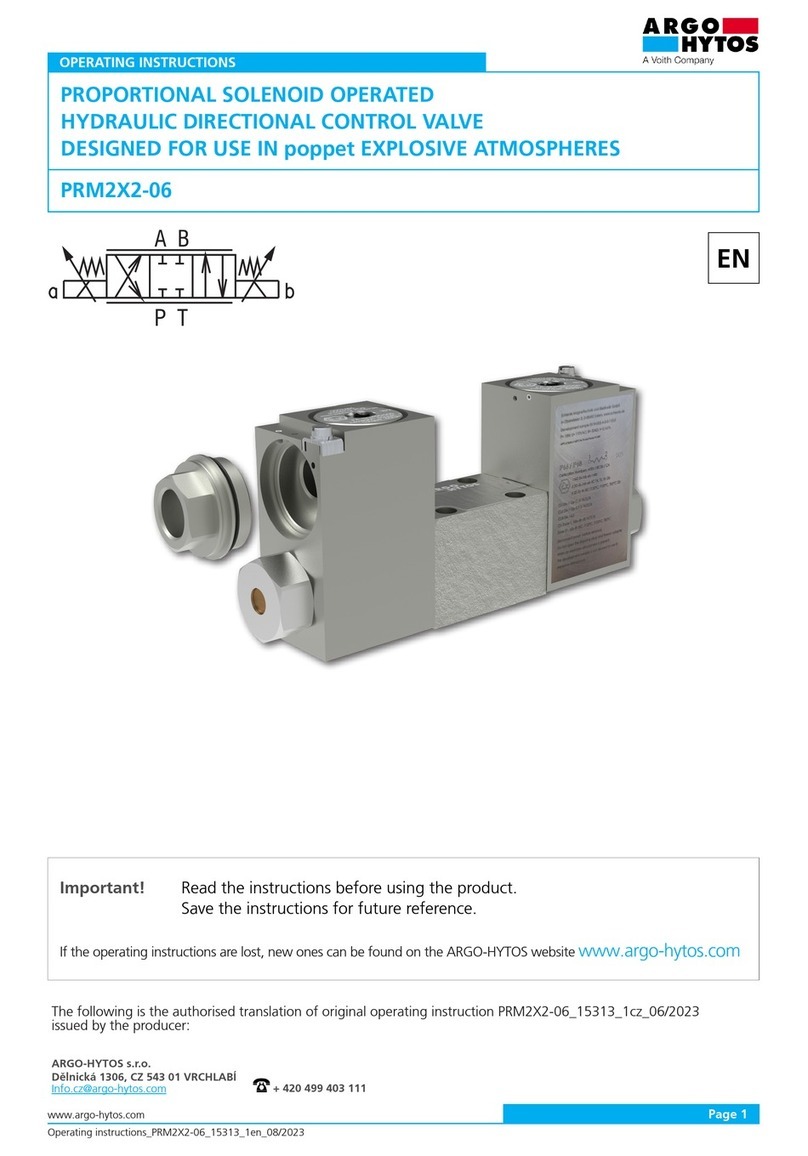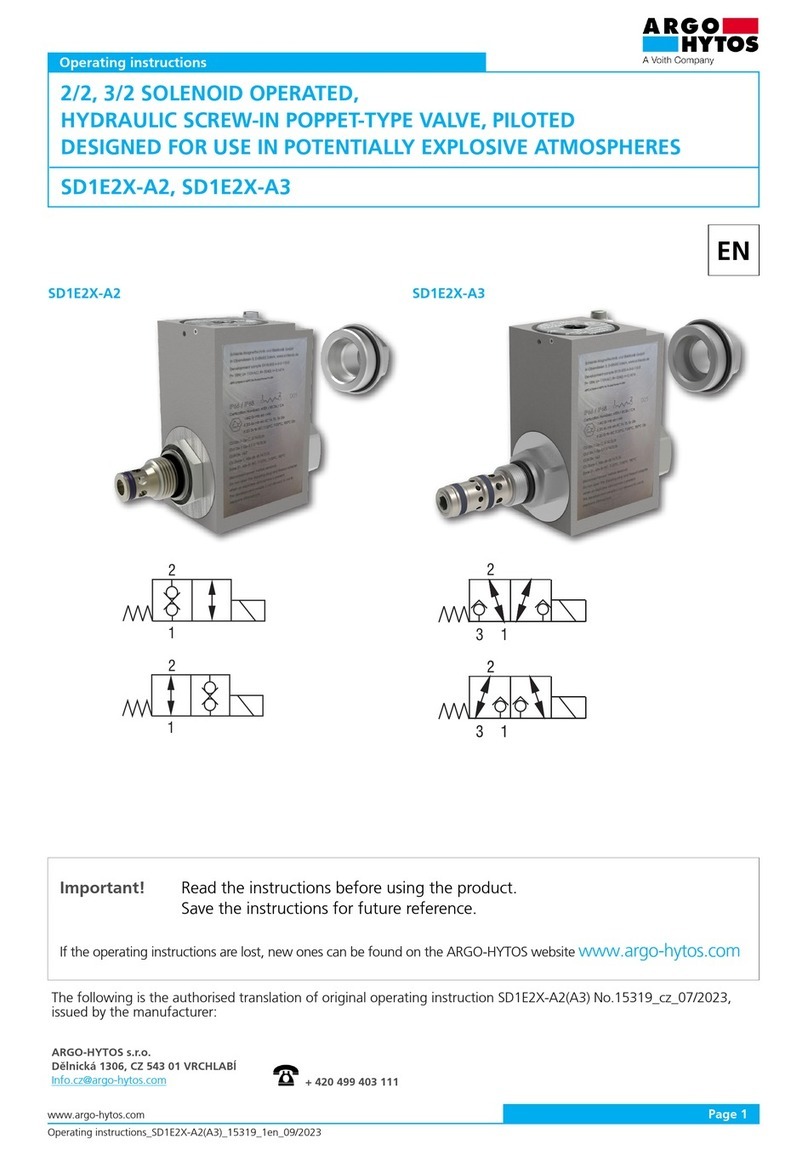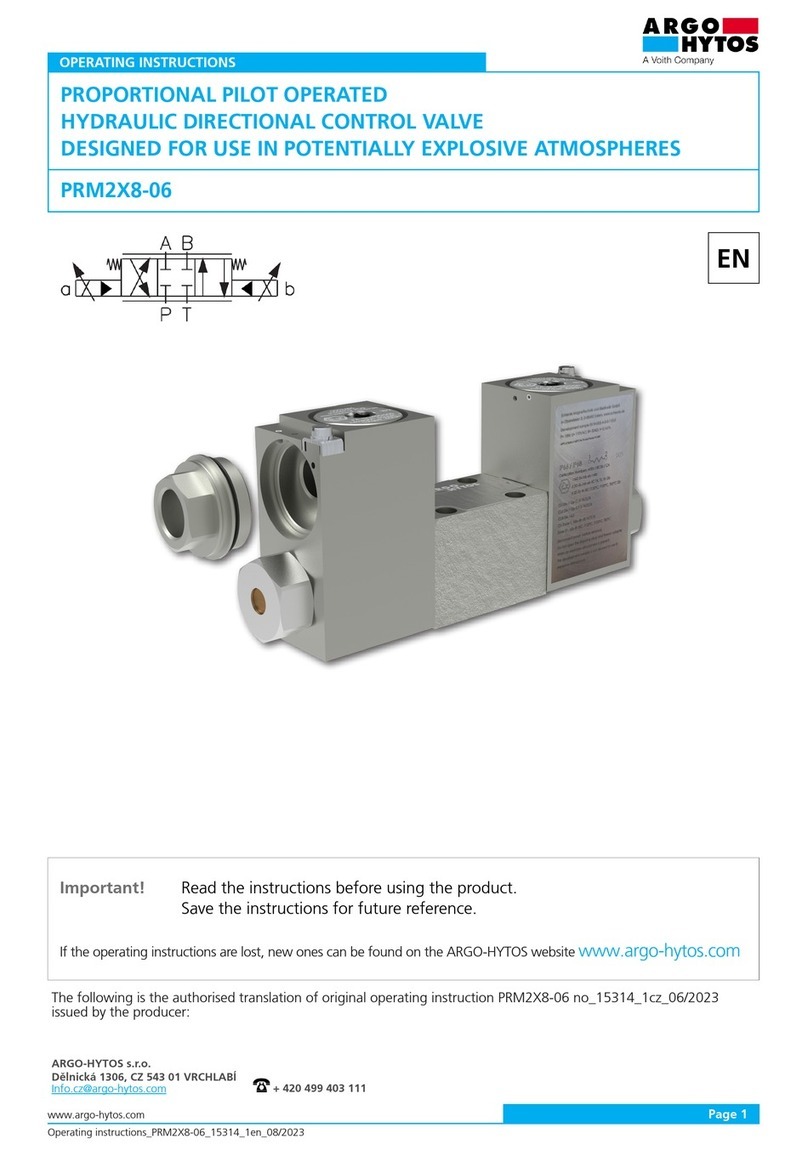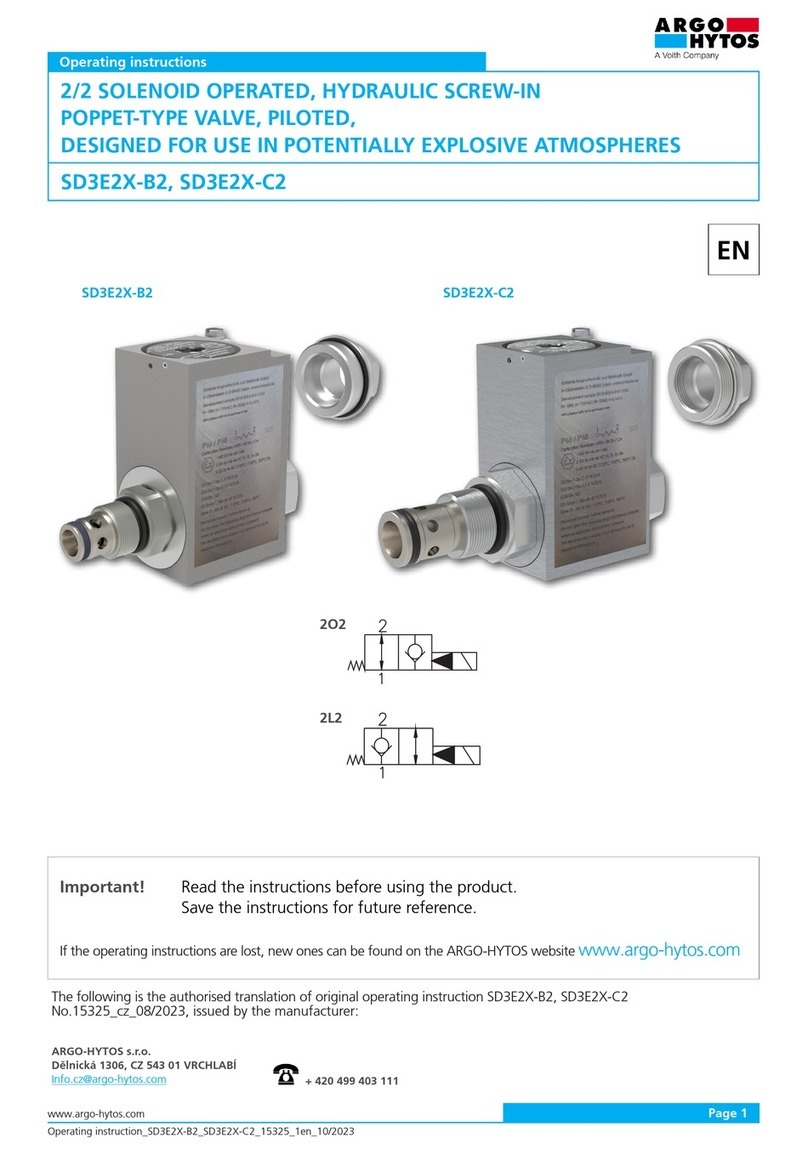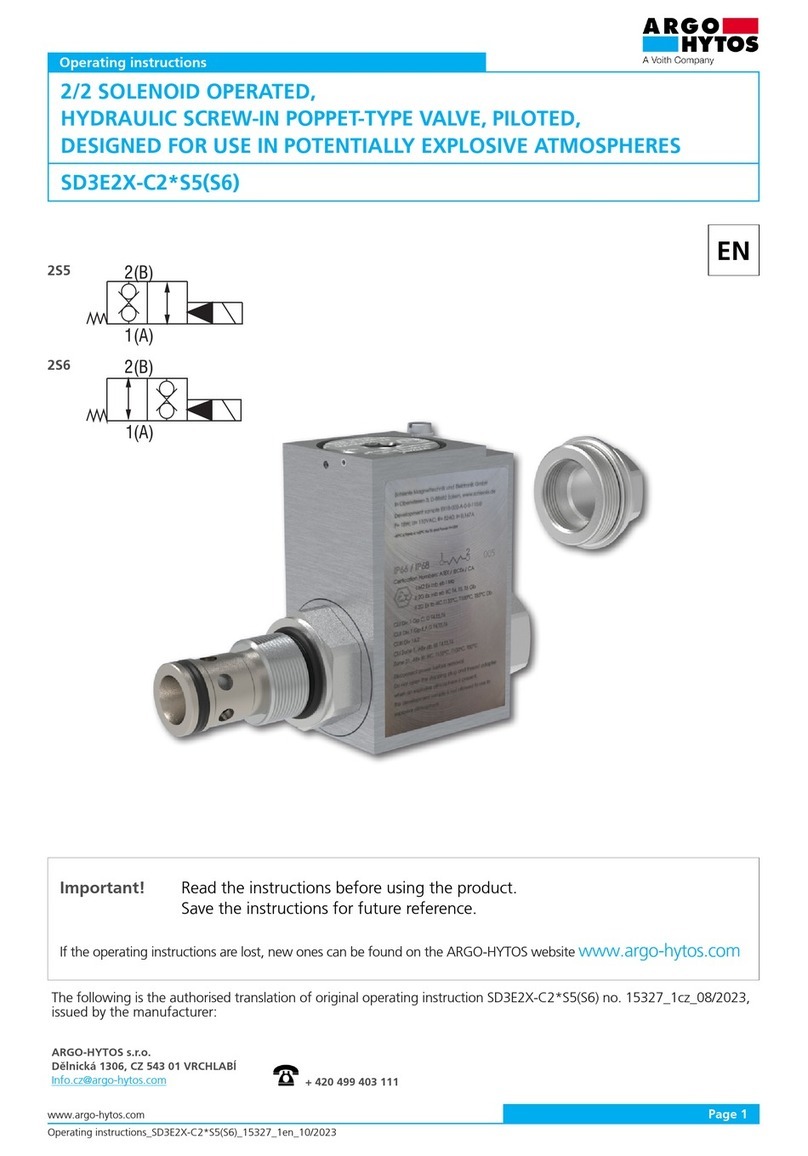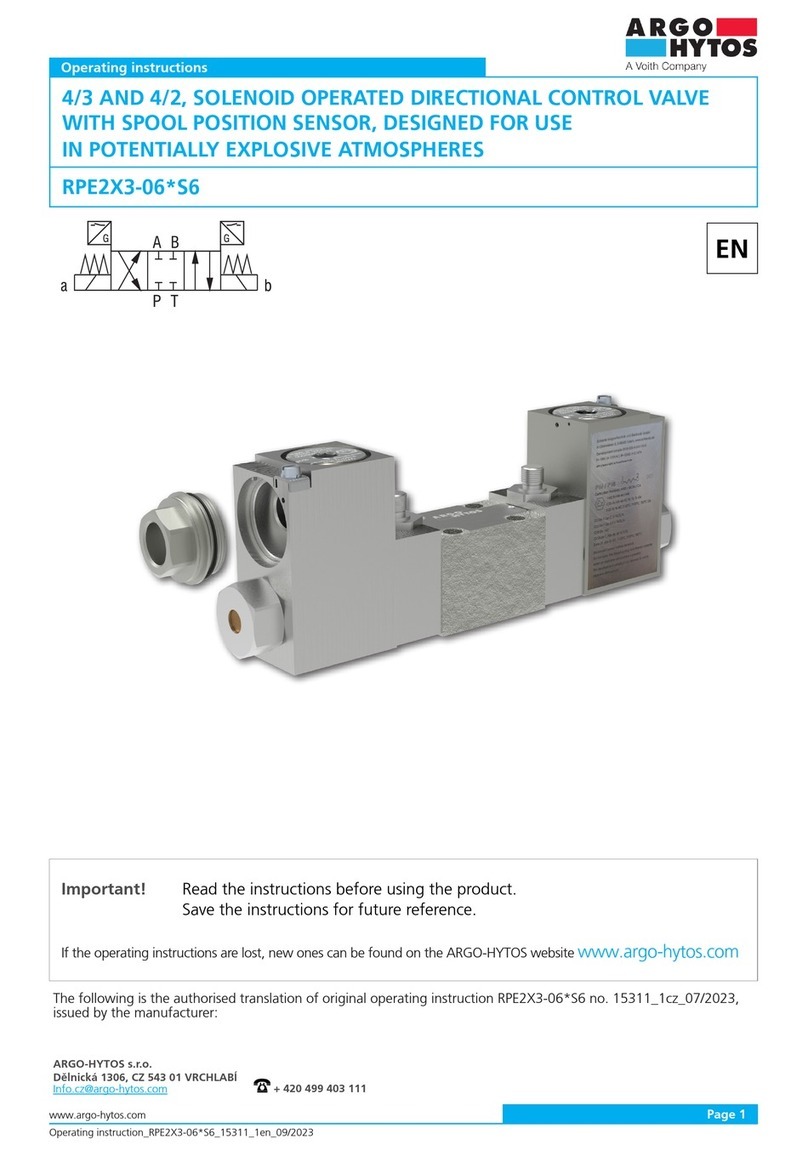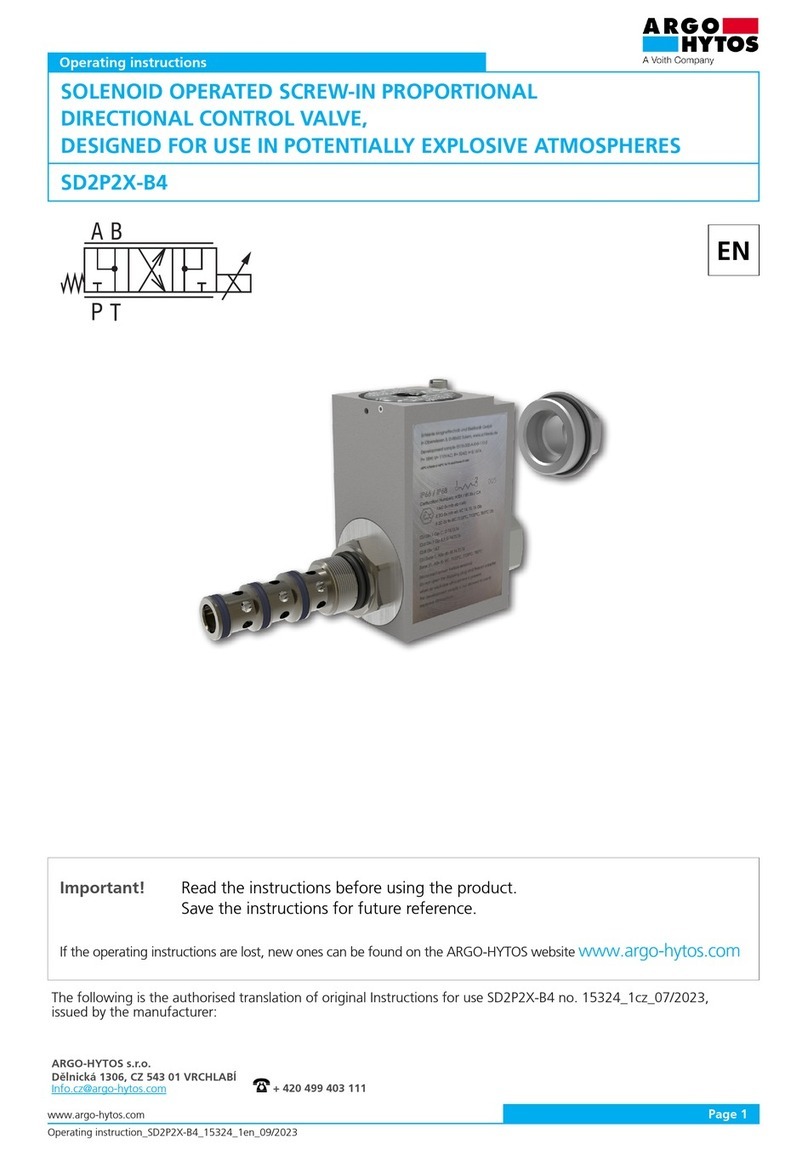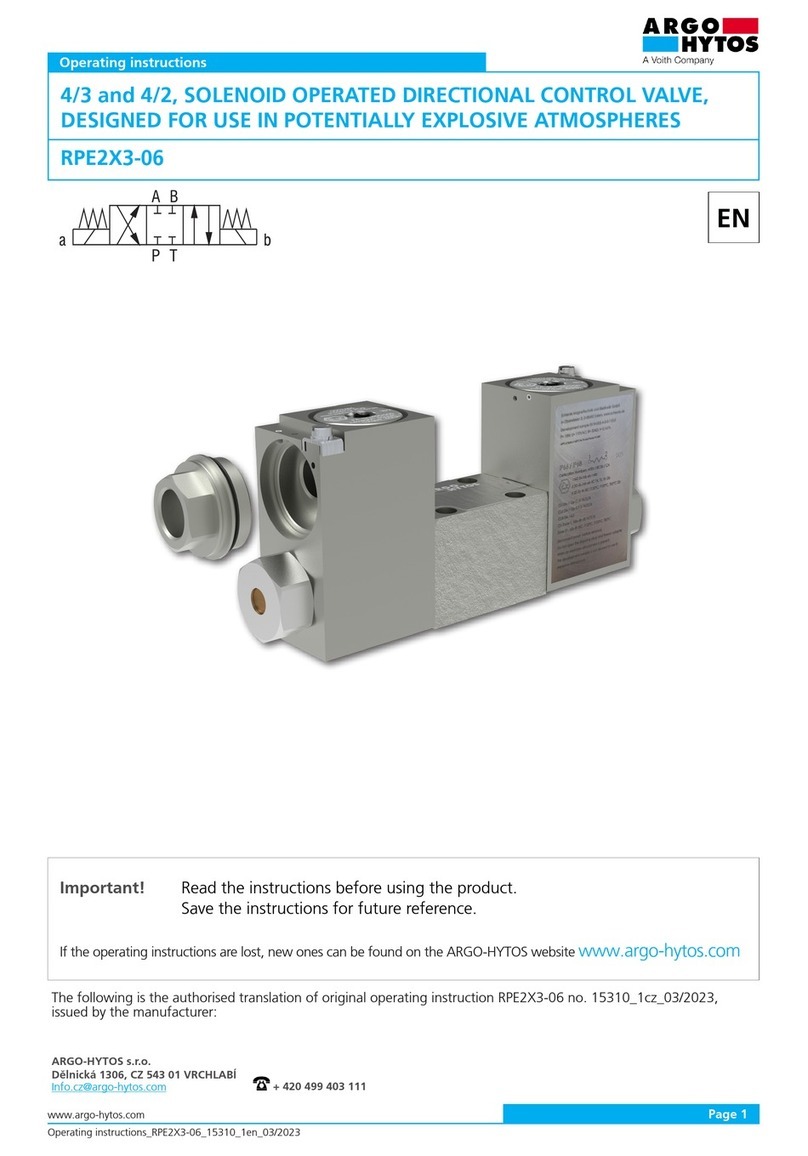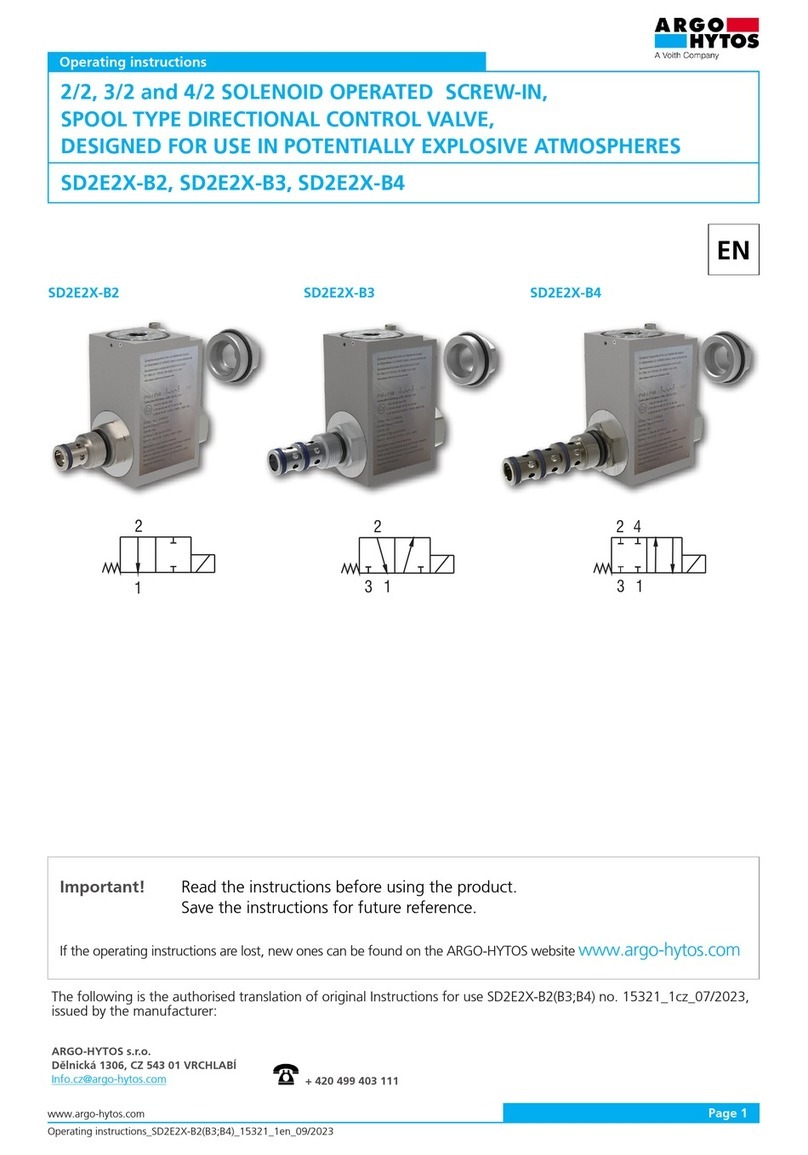
Operating instructions_PVRM2X3-103_15315_1en_09/2023
Page 8 www.argo-hytos.com
An overview of signal words and warning signs used in the text
An overview of other symbols and abbreviations used in the text
Symbol, designation Description of the meaning of the symbol, designation
AC, DC Designation for alternating (AC) and direct (DC) current, voltage
ATEX Explosive Atmospheres
EPL Equipment Protection Level (see EN 60079.0)
IEC International Electrotechnical Commission
NBR Rubber used for the manufacture of seals
PA Polyamide
PE Polyethylene
PU Polyurethane
Glossary of technical terms used
›A hydraulic mechanism is one in which energy is transmitted via the pressure energy of the working fluid.
›The volumetric flow rate Q is the amount of liquid in volume units that flows through a given flow cross-section per time unit
(SI unit is m3s-1, in practice the unit l/min is used)
›The control solenoid is designed to reposition the valve spool that interconnects or closes the channels in the body. The solenoid consists of
an excitation coil which, by passing an electric current through the winding, generates a magnetic field which exerts a force on the armature of
the mechanical actuating system.
›The pressure reducing valve is a valve designed to control pressure. It reduces the input pressure to a set value and keeps the output pressure
constant. In addition, the three-way version, protects the output branch of the hydraulic circuit, usually leading to the appliance, against overpressure.
›The screw-in valve is designed to be screwed into a shaped chamber in the hydraulic block. The valve body is replaced by a steel sleeve in
which the spool or poppet moves.
›Pressure is the force acting per area unit (SI unit Pascal (1 Pa = Nm-2), in practice the unit used is bar (1bar = 0,1MPa)
1. Use of product
The PVRM2X3-103 hydraulic valve is a proportional pressure reducing valve, directly controlled by a solenoid. The valve is designed to be screwed
into a shaped cavity in a block with metric connection thread M24x1,5. The shape and dimensions of the cavity comply with the technical standard
ISO 7789. When flowing towards the appliance (port A), the pressure reducing valve reduces the value of the input pressure from the source-pump
(channel P) to the set value of the output pressure and keeps it constant. The value of the reduced pressure is adjusted by a solenoid in proportion to
the control current signal through the solenoid. If the appliance is overloaded with pressure, for example by an excessive external force, the valve
closes the pressure input from the pump and relieves the appliance branch by connecting it to the tank (port T)
Valves with ATEX certification according to Directive 2014/34/EU and IECEx certification according to IECEx OD 009 and related harmonized
standards may be used in explosive atmospheres consisting of mine gas, gas or dust. The valves are marked with the CE Ex mark of conformity and
are accompanied by a Declaration of Conformity.
Use in explosive atmospheres:
Equipment - group I, mines, where the explosive atmosphere of firedamp consists predominantly methane.
The valve has a high level of safety (EPL = Mb), which makes initiation unlikely during the interval between gas discharge and valve shutdown.
It is designed for category M2 devices that remain off after gas discharge.
Equipment - group II, where the explosive atmosphere consists of gasses other than mines gas.
The valve has a high level of safety (EPL = Gb) which allows the valve to be used in zones 1 and 2. The valve must not be used in zone 0.
There is a risk of explosion. The valve is certified for gas groups IIA (typical gas is propane), IIB (typical gas is ethylene) also for hydrogen from group IIC.
The joint dimensions do not meet the requirements for Group IIC acetylene.
Equipment - group III, where the explosive atmosphere consists of dust and flammable flying particles.
The valve has a high level of safety (EPL = Db) which allows the valve to be used in zones 21 and 22. The valve must not be used in zone 20. There is
a risk of explosion. The valve is certified for all dust groups - IIIA (flammable flying particles), IIIB (non-conductive dust) and lIIC (conductive dust).
Area of application
Equipment - group I – MINES Equipment - group II (IIG) - GAS Equipment - group III (IID) - DUST
Category M1– NO Zone 0 - NO Zone 20 - NO
Categorie M2
(the device remains
switched off)
Zone 1
Zone 2
IIA (propane) Zone 21
Zone 22
IIIA (flammable particles)
IIB (ethylene) + H2 (hydrogen) IIIB (non-conductive dust)
IIIC (conductive dust)
DANGER Signal word combined with a warning sign used to signify that a dangerous situation which could result in
death or serious injury is imminent.
WARNING Signal word combined with a warning sign used to signify the occurrence of a potentially dangerous situation
that could result in death or serious injury if not avoided.
CAUTION Signal word combined with a warning sign used to signify a potentially hazardous situation which, if not
avoided, may result in minor or moderate injury.

